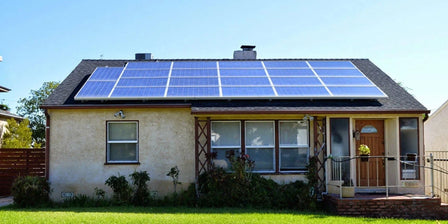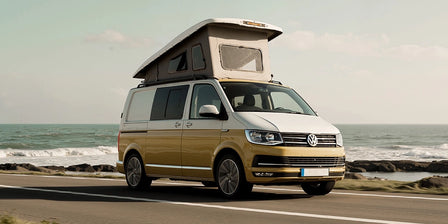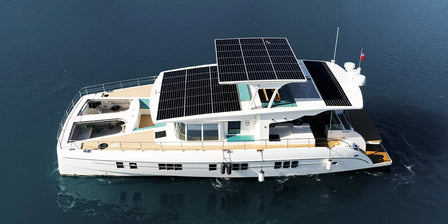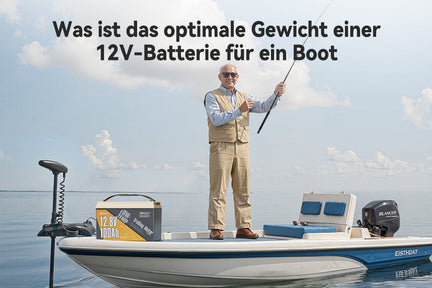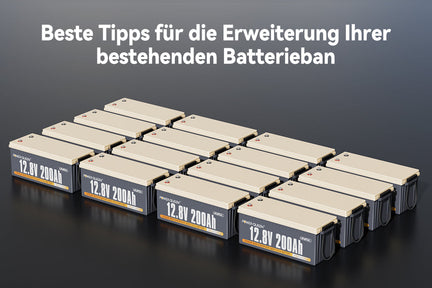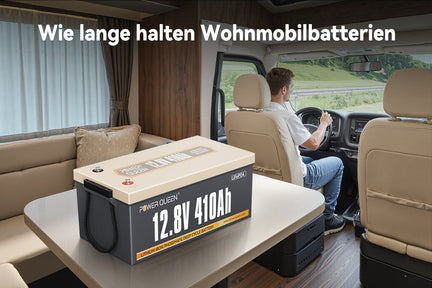The ultimate guide to replacing the motorhome battery
Motorhomes are fantastic for traveling, camping, or even as a small home on wheels. One of the most important parts of an RV is its battery, which serves as a power source when you're not plugged in or during a power outage. Like any other battery, RV batteries wear out over time and need to be replaced. In this article, we'll discuss everything you need to know about replacing your RV battery.
Table of contents
- Part 1: Common types of RV batteries
- 1. Liquid batteries (lead-acid batteries)
- 2. AGM (Absorbent Glass Mat) batteries
- 3. Gel batteries
- 4. Lithium iron phosphate batteries
- Part 2: 6 Signs It's Time to Replace Your RV Battery
- Part 3: How to Replace a Motorhome Battery - Step-by-Step Guide
- Part 4: Benefits of replacing your RV battery with a lithium-ion battery
Part 1: Common types of RV batteries
1. Liquid batteries (lead-acid batteries)
Liquid batteries (also called lead-acid batteries) are one of the most common battery types used in RVs. These batteries come in a variety of shapes and sizes to suit the needs of different vehicles and are known for their fast charging speed and affordability. However, they require occasional maintenance by replenishing lost electrolyte with water, which can make them less convenient than other battery types. The lifespan of this type of battery is relatively short, with a cycle life of approximately 300-500 cycles. Therefore, you'll need to replace them after approximately three years of use.
Advantages
- They are relatively inexpensive compared to other battery technologies.
Disadvantages
- Heavy and bulky: These batteries are heavy and bulky, making them difficult to install and handle.
- Maintenance required: Liquid batteries require regular maintenance, including adding distilled water to replenish lost electrolytes, which can be inconvenient for some RV owners.
- Shorter lifespan: These batteries typically have a shorter lifespan than LiFePO4 batteries, so they need to be replaced more frequently, increasing their long-term costs.
- Lower efficiency: Liquid batteries are less efficient than LiFePO4 batteries, meaning they lose more energy as heat during charging and discharging.
- High self-discharge rate: On average, a new and fully charged liquid battery stored at room temperature (25 °C or 77 °F) can self-discharge between 3-20% per month.

Image source: www.phlsci.com
2. AGM (Absorbent Glass Mat) batteries
AGM batteries are a great innovation in RV batteries because they can serve two functions: as a deep-cycle battery and as a starting battery. They work by using fiberglass as a separator to hold electrolytes in place. AGM batteries are highly shock-resistant and, due to their tight packaging and good vibration resistance, have minimal internal resistance. This low internal resistance reduces charging time and increases the output voltage as energy flows through the battery.
AGM batteries are also known for their corrosion- and acid-free nature, making them possibly the easiest batteries to connect and install with minimal maintenance.
Additionally, AGM batteries have high capacity, and there are models designed for efficient solar energy storage applications, making them a good choice for off-grid use. With proper maintenance, AGM batteries can outlast three conventional lead-acid batteries, making them an ideal choice for RVs.
AGM batteries also have a longer lifespan than liquid batteries. With proper maintenance, an AGM battery can last up to 5-7 years or even longer.

Image source: www.phlsci.com
Advantages
- AGM batteries are maintenance-free and do not require regular refilling of water or checking of electrolyte levels.
- They have minimal internal resistance, which means they can be charged and discharged more efficiently and can deliver high power peaks when needed.
- AGM batteries have a high capacity, which means they can provide a constant power supply over a longer period of time.
- AGM batteries can function as both deep cycle and starter batteries, making them versatile and suitable for a wide range of applications.
Disadvantages
- They are sensitive to overcharging and require a specific charging profile, which can make them incompatible with some chargers.
- AGM batteries have a lower energy density than other battery types, which means they may not be suitable for applications that require high energy storage capacity in a compact size.
- They are not designed for deep discharge cycles. Excessive deep discharge can shorten their lifespan, and they may not fully recover if discharged too deeply.
- AGM batteries may require a higher voltage charger to complete a full charge cycle.
3. Gel batteries
Gel batteries are a type of RV battery that is valve-regulated and forms a gel-like substance when their electrolytes are mixed with sulfuric acid and silica. This gel substance allows the battery to function similarly to conventional lead-acid batteries, with the key difference being the addition of silica to create the gel mixture. Gel batteries are easy to install and maintain, requiring little maintenance due to their gel composition instead of liquid.
Advantages
- Gel batteries are sealed, which means they require less maintenance than lead-acid batteries.
- They have a lower self-discharge rate, so they can be stored for longer periods without being recharged.
Disadvantages
- Gel batteries are more expensive than lead-acid batteries.
- They have a lower energy density than lithium-ion batteries, which means they cannot store as much energy.
- They can be damaged by overcharging or undercharging, which can shorten their lifespan.
- They require a specific charging voltage and current, which may require a specialized charger.

Image source: www.phlsci.com
4. Lithium iron phosphate batteries
Lithium iron phosphate batteries for RVs are lithium batteries specifically designed for use in recreational vehicles. These batteries are becoming increasingly popular among RV owners due to their many advantages over conventional lead-acid batteries.

One of the biggest advantages of lithium iron phosphate batteries for RVs is their high energy density, which allows them to store more energy in a smaller and lighter package. They are also extremely efficient and can be discharged and recharged more quickly than lead-acid batteries. Additionally, LiFePO4 batteries have a much longer lifespan than conventional lead-acid batteries, with some models lasting up to 10 years or more.
Lithium iron phosphate batteries for RVs also stand out for their safety features, including resistance to overheating and short circuits. They are also environmentally friendly and contain no toxic chemicals or heavy metals.
Overall, lithium iron phosphate RV batteries are an excellent choice for anyone looking to upgrade their RV power system. They're efficient, durable, lightweight, and environmentally friendly, making them a great investment for any RV owner who wants to travel off-grid without worrying about low power.
Learn more about the advantages of replacing motorhome batteries with LiFePO4.
Part 2: 6 Signs It's Time to Replace Your RV Battery
Part 3: How to Replace a Motorhome Battery - Step-by-Step Guide
Step 1: Disconnect the power supply: If you're replacing a household battery, you usually have a main circuit breaker that ensures all DC power to your appliances is turned off. Turn this switch to the off position. If you don't have a main circuit breaker, turn off all individual fuses and switches that connect things like lights, the refrigerator, and the television. If you're replacing a starter battery, turn off the engine.(Disconnecting the power cables from the battery while the devices are in use may damage the devices.)
Step 2: Open the battery cover. Check your owner's manual to determine the location of your household or starter battery. For safety reasons, we recommend wearing protective eyewear.
Step 3: First, remove the negative (black) cable terminal from the battery. For stubborn wing nuts, you may need a socket wrench or pliers. If the nut is overtightened, be careful not to damage it.
Step 4: Remove the positive (red) cable terminal from the battery. It's very important that the negative and positive cable terminals do not come into contact with each other. Even more importantly, do not touch the terminals with your hands; if you touch the red and black terminals at the same time, you'll close the circuit and lose your ability to enjoy your RV.
Step 5: Carefully remove the battery from the battery compartment to avoid straining your back. It's recommended that you seek assistance, as household batteries are very heavy. Starter batteries are easier to operate with one hand.
Step 6: Replace the empty battery compartment with a brand new battery.
Step 7: Connect the positive (red) cable terminal to the positive battery terminal post. Tighten the nut, being careful not to strip or damage the threads.
Step 8: Carefully place the negative (black) cable terminal onto the negative battery terminal post. Tighten the nut as described in step 7.
Step 9: Make sure the battery is securely fastened and close the compartment.
Step 10: For your starter battery, start the motorhome, and off you go! For household batteries, switch the main circuit back to the on position and test your various fuses and switches to check the power supply.
Note: For household batteries, you can test the battery voltage with a voltmeter. If the battery reads more than 13 volts direct current (VDC), it's in good condition. Batteries that can't sustain more than 10-11 VDC should be replaced. If your battery reads low voltage, try charging it and testing again.
Watch the video to learn more.
Part 4: Benefits of replacing your RV battery with a lithium-ion battery
Replacing your RV battery with a lithium iron phosphate battery offers several advantages. Here are some of the benefits of using LiFePO4 batteries in your RV:
1. Higher energy density
LiFePO4 batteries have a higher energy density than conventional liquid lead-acid batteries, which means they can store more energy in a smaller space. This makes them ideal for RVs with limited storage space. For example, the energy density of Power Queen 12.8V 100Ah up to 1280Wh, while a lead-acid battery with the same capacity is about 35 Wh/kg.
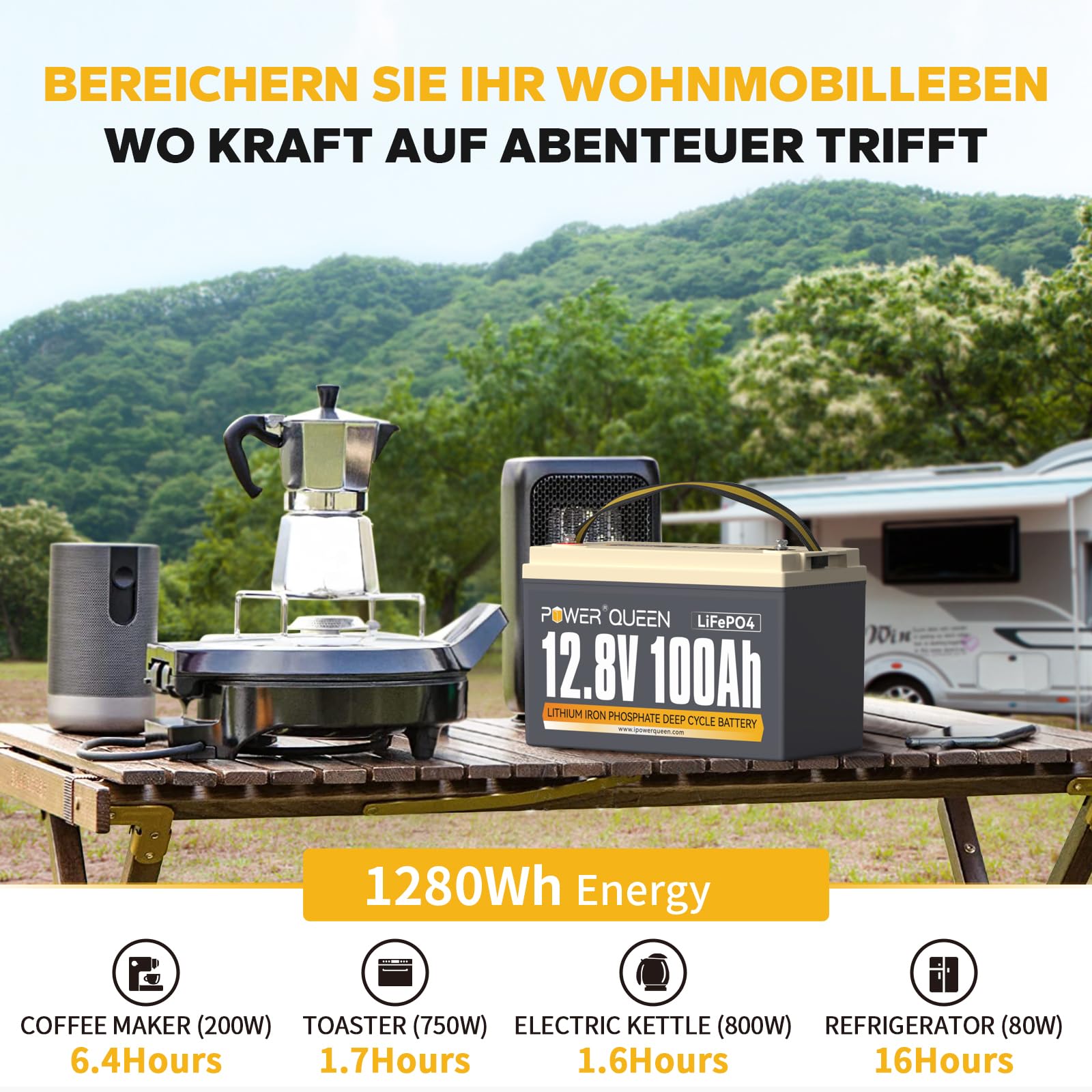
2. Longer service life
LiFePO4 batteries have a longer lifespan than lead-acid batteries and can last up to 10 years or more with proper maintenance. This means you won't need to replace your RV battery as frequently.
3. Lower weight
LiFePO4 batteries are significantly lighter than lead-acid batteries, making them easier to install and transport.
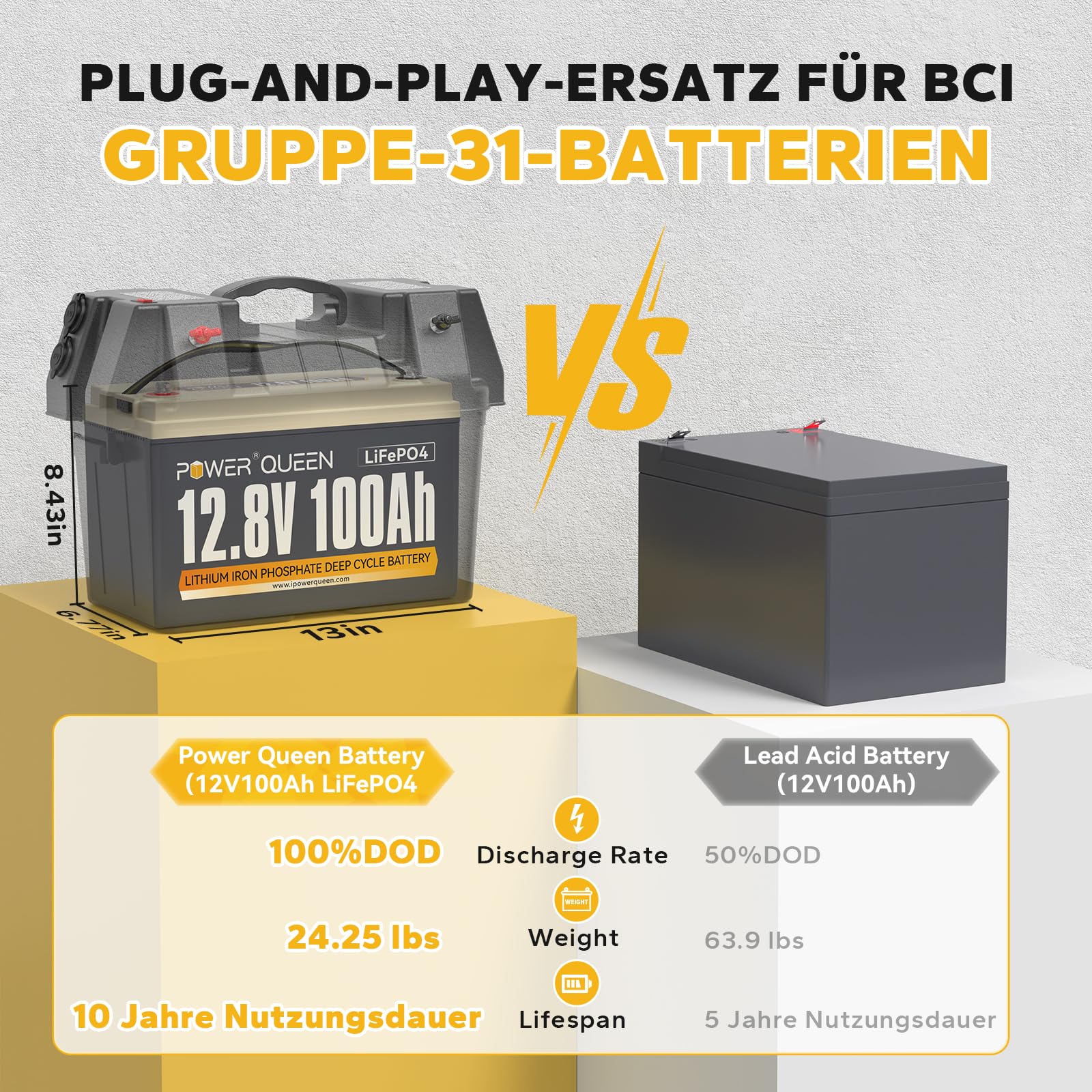
4. Faster loading time
LiFePO4 batteries can be charged faster than lead-acid batteries, meaning you spend less time waiting for your battery to charge and more time enjoying your RV adventures.
5. No maintenance required
Unlike lead-acid batteries, LiFePO4 batteries do not require regular maintenance such as topping off electrolyte levels. This makes them more convenient and less time-consuming.
6. Better performance in extreme temperatures
LiFePO4 batteries perform better than lead-acid batteries under extreme temperatures, including hot and cold weather.
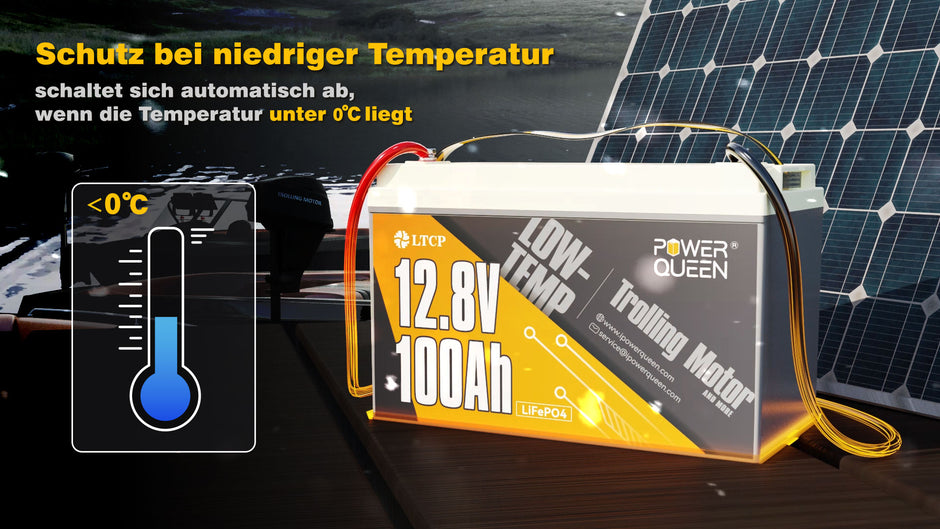
7. Security
LiFePO4 batteries are considered safer than lead-acid batteries because they are less susceptible to thermal runaway and fire. Power Queen's LiFePO4 batteries also feature a Battery management system (BMS) equipped to protect your safety.
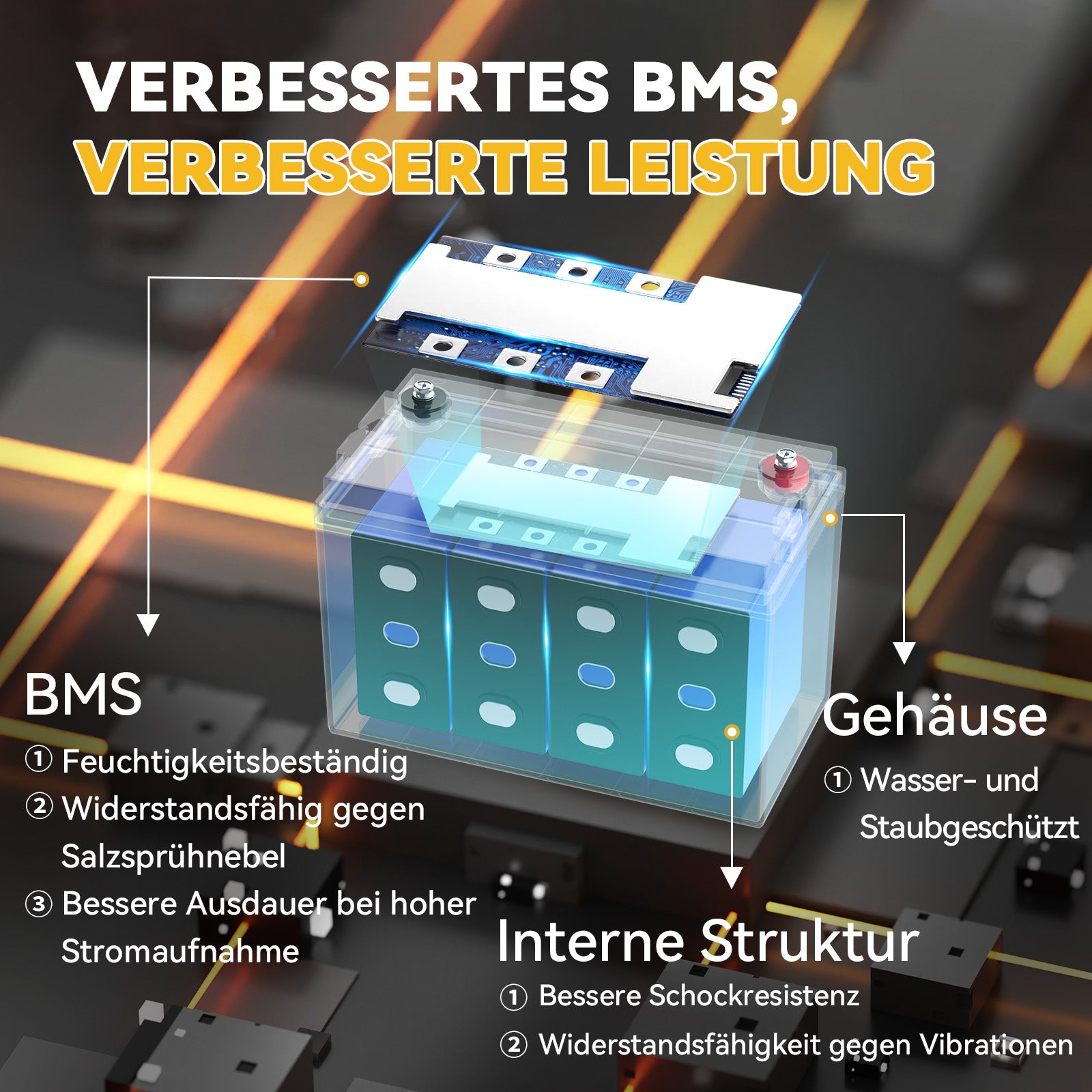
8. Efficiency
LiFePO4 batteries are more efficient than lead-acid batteries, meaning they lose less energy as heat during charging and discharging.
We recommend that you read the details about lithium batteries and lead-acid batteries.
Summary
In summary, replacing your RV battery is an essential part of maintaining your vehicle's electrical system. Signs like age, difficulty starting, dim lights, and unusual noises can indicate that it's time to replace your RV battery. The battery replacement process is simple, but it's important to take safety precautions.
Finally, switching to a lithium-ion RV battery offers many benefits, including a lightweight and compact design, longer lifespan, and minimal maintenance. Whether you're looking to upgrade your RV battery or replace a worn-out battery, consider a lithium-ion battery for improved performance and efficiency.
Power Queen always offers you reliable products and outstanding service. Do not hesitate to contact us at service.de@ipowerqueen.com to report if you have any questions.














